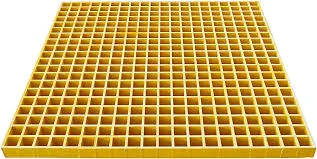
-
 Afrikaans
Afrikaans -
 Albanian
Albanian -
 Amharic
Amharic -
 Arabic
Arabic -
 Armenian
Armenian -
 Azerbaijani
Azerbaijani -
 Basque
Basque -
 Belarusian
Belarusian -
 Bengali
Bengali -
 Bosnian
Bosnian -
 Bulgarian
Bulgarian -
 Catalan
Catalan -
 Cebuano
Cebuano -
 China
China -
 China (Taiwan)
China (Taiwan) -
 Corsican
Corsican -
 Croatian
Croatian -
 Czech
Czech -
 Danish
Danish -
 Dutch
Dutch -
 English
English -
 Esperanto
Esperanto -
 Estonian
Estonian -
 Finnish
Finnish -
 French
French -
 Frisian
Frisian -
 Galician
Galician -
 Georgian
Georgian -
 German
German -
 Greek
Greek -
 Gujarati
Gujarati -
 Haitian Creole
Haitian Creole -
 hausa
hausa -
 hawaiian
hawaiian -
 Hebrew
Hebrew -
 Hindi
Hindi -
 Miao
Miao -
 Hungarian
Hungarian -
 Icelandic
Icelandic -
 igbo
igbo -
 Indonesian
Indonesian -
 irish
irish -
 Italian
Italian -
 Japanese
Japanese -
 Javanese
Javanese -
 Kannada
Kannada -
 kazakh
kazakh -
 Khmer
Khmer -
 Rwandese
Rwandese -
 Korean
Korean -
 Kurdish
Kurdish -
 Kyrgyz
Kyrgyz -
 Lao
Lao -
 Latin
Latin -
 Latvian
Latvian -
 Lithuanian
Lithuanian -
 Luxembourgish
Luxembourgish -
 Macedonian
Macedonian -
 Malgashi
Malgashi -
 Malay
Malay -
 Malayalam
Malayalam -
 Maltese
Maltese -
 Maori
Maori -
 Marathi
Marathi -
 Mongolian
Mongolian -
 Myanmar
Myanmar -
 Nepali
Nepali -
 Norwegian
Norwegian -
 Norwegian
Norwegian -
 Occitan
Occitan -
 Pashto
Pashto -
 Persian
Persian -
 Polish
Polish -
 Portuguese
Portuguese -
 Punjabi
Punjabi -
 Romanian
Romanian -
 Russian
Russian -
 Samoan
Samoan -
 Scottish Gaelic
Scottish Gaelic -
 Serbian
Serbian -
 Sesotho
Sesotho -
 Shona
Shona -
 Sindhi
Sindhi -
 Sinhala
Sinhala -
 Slovak
Slovak -
 Slovenian
Slovenian -
 Somali
Somali -
 Spanish
Spanish -
 Sundanese
Sundanese -
 Swahili
Swahili -
 Swedish
Swedish -
 Tagalog
Tagalog -
 Tajik
Tajik -
 Tamil
Tamil -
 Tatar
Tatar -
 Telugu
Telugu -
 Thai
Thai -
 Turkish
Turkish -
 Turkmen
Turkmen -
 Ukrainian
Ukrainian -
 Urdu
Urdu -
 Uighur
Uighur -
 Uzbek
Uzbek -
 Vietnamese
Vietnamese -
 Welsh
Welsh -
 Bantu
Bantu -
 Yiddish
Yiddish -
 Yoruba
Yoruba -
 Zulu
Zulu
Exploring the Benefits of FRP Cars in the Automotive Industry
The Rise of FRP Cars A Revolution in Automotive Engineering
In recent years, the automotive industry has witnessed a remarkable transformation with the increasing prevalence of fiberglass reinforced plastic (FRP) cars. This innovative material is changing the way manufacturers design and produce vehicles, offering a host of advantages over traditional materials. As we delve into the reasons behind the rise of FRP cars, it becomes clear that they are not just a passing trend, but a significant shift in automotive engineering.
What is FRP?
Fiberglass reinforced plastic is a composite material made from a polymer matrix reinforced with fiberglass. It combines the lightweight properties of plastic with the durability and strength provided by fiberglass, making it an excellent choice for various applications, particularly in automotive design. FRP offers significant flexibility, allowing for intricate shapes and designs that would be impossible to achieve with metals. Furthermore, it is corrosion-resistant, which makes it particularly useful in environments that can cause deterioration in traditional materials.
Advantages of FRP Cars
One of the most notable advantages of FRP cars is their lightweight nature. By significantly reducing the weight of vehicles, manufacturers can improve fuel efficiency and performance. A lighter car consumes less fuel, which is increasingly significant as consumers and regulatory bodies become more concerned about environmental issues and fuel consumption. This has great implications for supporting global initiatives aimed at reducing carbon footprints.
In addition to weight savings, FRP enhances safety. The inherent impact resistance of fiberglass composites means that FRP cars can better absorb shock during collisions, thereby providing greater protection to occupants. This safety feature is essential in today's market as consumers prioritize vehicle safety ratings more than ever before.
frp car

Moreover, FRP materials can lead to cost savings in manufacturing. While the initial investment in FRP technology may be high, the reduced need for maintenance, as well as the longevity of the materials, often balance out the costs in the long run. As manufacturers adapt to FRP technology, they also find that production processes can be streamlined, resulting in quicker turnaround times and, ultimately, reduced labor costs.
The Market Response
Automakers are rapidly embracing the advantages of FRP as they strive to meet evolving market demands. Several high-performance brands are already utilizing FRP in their latest models, claiming that it enhances both spectral dynamics and overall driving experience. For instance, luxury and sports cars often employ FRP to optimize their weight-to-power ratio, ensuring better speed and handling capabilities.
In addition to high-performance vehicles, we see an emerging trend where electric vehicle (EV) manufacturers are integrating FRP into their designs. As weight becomes a critical factor in extending battery life, the lightness of FRP is proving invaluable in enhancing the efficiency of electric powertrains.
The Future of FRP in Automotive Design
Looking forward, the future of FRP cars is promising. As technology progresses, innovations in manufacturing processes like 3D printing and automated production are set to reduce the costs associated with FRP, making it accessible to more manufacturers. Increased collaboration between material scientists and automotive engineers could lead to even more advanced composites, expanding the possibilities within the industry.
In conclusion, the rise of FRP cars marks a significant evolution in automotive engineering. With their lightweight, cost-saving, and safety-enhancing properties, these vehicles are positioned to play a crucial role in the future of transportation. As we continue to pursue more sustainable and efficient vehicles, FRP chemistry will likely remain at the forefront, driving innovation and redefining what is possible in car manufacturing. The new era of automobiles is here, and it is undoubtedly taking shape with the impressive capabilities of fiberglass reinforced plastic.









